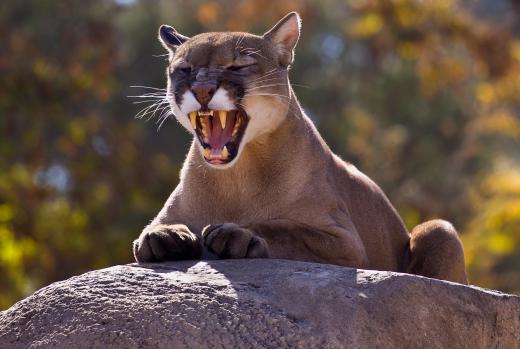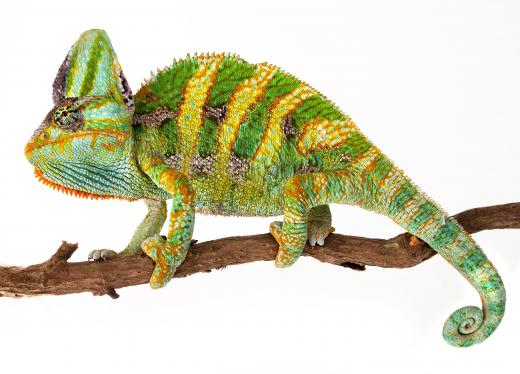What is Crypsis?
 Michael Anissimov
Michael Anissimov
Crypsis is an evolutionary technique, employed by various animals, to hide from other animals. This can be used by prey to avoid predators, such as the Arctic snow hare, or by predators to sneak up on prey, like the leaf-patterned Gaboon Viper. Some animals use crypsis so effectively that you can't see them even if you're looking straight at them, like some octopuses, which can can change color in a second, and leaf insects, whose bodies look leaf-like even under a magnifying glass. Contrary to common belief, chameleons, among the most famous cryptic animals, do not usually change their skin color to match their surrounding environment, but rather to express mood.
Crypsis can be an effective evolutionary strategy. Even a species that only gets eaten 10% less of the time may eventually surpass the reproduction rate of a competitor that lacks these abilities. In this way, crypsis may evolve incrementally. Crypsis is practiced by most major animal phyla, including cephalopods such as cuttlefish, geckos and other lizards, mammals such as cougar and ibex, assorted frogs and turtles, birds, and many others. The alternative to crypsis is aposematism, where an animal alerts others to its presence with striking coloration or some other warning sign.

Sometimes cryptic animals utilize their surroundings to help camouflage, like a sniper using nearby leaves to built a hideout. Nudibranchs, small marine mollusks, consume bits of coral, the pigments of which get channeled to their skin. This means that a nudibranch can shift between coral colonies of different colors and acquire the appropriate coloration before getting noticed by a predator. In the same way, flukes, a sort of parasite, change coloration to match their host.

Many animals change their color seasonally, as seasonal changes modify the appearance of the environment the most. The standard example is the Arctic fox, which is dirt brown in summer and white in winter. Some birds also have a tendency to grow feathers of colors that help them camouflage better depending on the season.
AS FEATURED ON:
AS FEATURED ON:













Discuss this Article
Post your comments